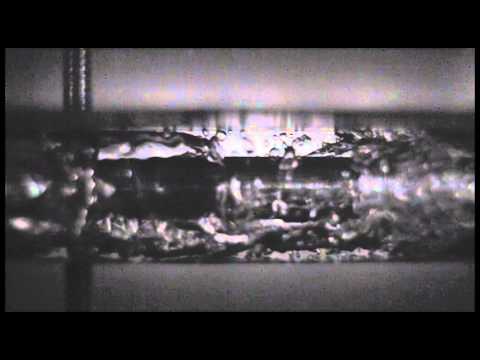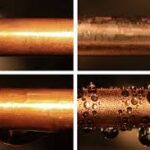1)  In flow boiling, the fluid is forced to move by an external source such as a pump as it undergoes a phase-change process. The boiling in this case exhibits the combined effects of convection and pool boiling
In flow boiling, the fluid is forced to move by an external source such as a pump as it undergoes a phase-change process. The boiling in this case exhibits the combined effects of convection and pool boiling
2) The flow boiling is also classified as either external and internal flow boiling
a) External flow boiling over a plate or cylinder is similar to pool boiling, but the added motion increases both the nucleate boiling heat flux and the critical heat flux.
b) The higher the velocity, the higher the nucleate boiling heat flux and the critical heat flux
c) Internal flow boiling is much more complicated in nature because there is no free surface for the vapor to escape, and thus both the liquid and the vapor are forced to flow together.
3)  Different stages encountered in flow boiling are as follows
Different stages encountered in flow boiling are as follows
a) Forced convection: The liquid is subcooled and heat transfer to the liquid
b) Bubbly Flow: bubbles start forming on the inner surfaces of the tube, and the detached bubbles are drafted into the mainstream. This gives the fluid flow a bubbly appearance.
c) Slug flow regime: the bubbles grow in size and eventually coalesce into slugs of vapor. Up to half of the volume in the tube is occupied by vapor.
d) Annular-flow regime: the core of the flow consists of vapor only, and the liquid is confined only in the annular space between the vapor core and the tube walls. Very high heat transfer coefficients are realized in this regime.
e) Transition regime: annular liquid layer gets thinner and thinner, and eventually dry spots start to appear on the inner surfaces of the tube. Appearance of dry spots is accompanied by a sharp decrease in the heat transfer coefficient. This continues until the inner surface of the tube is completely dry.
f) Mist-flow regime: Any liquid at this moment is in the form of droplets suspended in the vapor core, which resembles a mist
g) At the end of the mist-flow regime we have saturated vapor, which becomes superheated with any further heat transfer.


